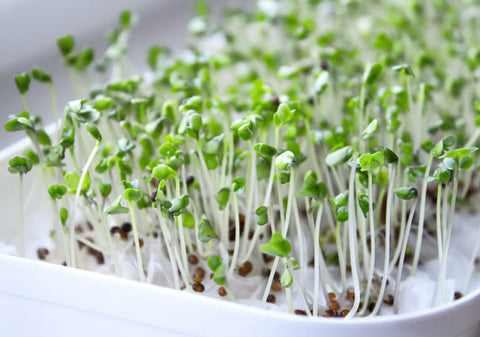In the world of gardening, few combinations are as iconic and beneficial as the Three Sisters planting method. Originating from indigenous agricultural practices in North America, Three Sisters gardening involves growing corn, squash, and beans together in a harmonious symbiotic relationship. This traditional technique not only maximizes space but also enhances soil fertility, minimizes weeds, and promotes healthier plants. In this blog post, we'll delve into the art of Three Sisters gardening, exploring the benefits, techniques, and tips for successfully growing corn, squash, and beans together in your garden.The following content also has some reference value for raised garden beds.

Understanding the Three Sisters
- Corn (Maize): Corn serves as the "sister" that provides support for the other plants. Its tall stalks act as natural trellises for the beans to climb, while also providing shade and wind protection for the squash.
- Squash (Winter and Summer Varieties): Squash serves as the "sister" that suppresses weeds and conserves moisture in the soil. Its large, sprawling vines create a living mulch that helps to smother weeds and retain moisture, reducing the need for additional watering and maintenance.
- Beans (Pole or Climbing Varieties): Beans serve as the "sister" that enriches the soil with nitrogen. As legumes, beans have a unique ability to form symbiotic relationships with nitrogen-fixing bacteria in the soil, converting atmospheric nitrogen into a form that plants can readily absorb. This natural fertilization process benefits not only the beans themselves but also the corn and squash growing nearby.
Benefits of Three Sisters Planting
- Companion Planting: The Three Sisters planting method is a classic example of companion planting, where different plant species are grown together to mutual benefit. Corn, squash, and beans complement each other's growth habits and nutrient needs, creating a balanced and harmonious ecosystem in the garden.
- Soil Health: By rotating crops and incorporating nitrogen-fixing legumes like beans into the planting scheme, Three Sisters gardening helps to improve soil health and fertility over time. The addition of organic matter from decomposing plant material also contributes to soil structure and microbial activity.
- Pest and Disease Management: The diversity of plant species in a Three Sisters garden can help to reduce pest and disease pressure. For example, squash vines act as a natural repellent for certain insect pests, while the dense foliage provides a habitat for beneficial insects that prey on pests.
- Space Efficiency: Three Sisters gardening maximizes space in the garden by stacking plants vertically and utilizing the natural attributes of each species. Corn provides vertical structure, beans climb the corn stalks, and squash sprawls along the ground, making efficient use of available space.

Tips for Successful Three Sisters Gardening
- Planting Arrangement: When planting the Three Sisters, arrange the corn in small mounds or hills spaced about 3 feet apart. Plant several seeds of corn in each mound to ensure pollination. Once the corn reaches a height of 6-8 inches, plant beans and squash around the base of each corn plant.
- Timing: Plant corn, beans, and squash after the danger of frost has passed and soil temperatures have warmed to at least 60°F (15°C). This typically occurs in late spring or early summer, depending on your location. Be sure to stagger planting times to ensure a continuous harvest throughout the growing season.
- Soil Preparation: Before planting, amend the soil with compost or well-rotted manure to improve fertility and drainage. Three Sisters gardening thrives in fertile, well-draining soil with a pH between 6.0 and 7.0.
- Maintenance: Keep the garden well-watered, especially during dry periods, to promote healthy growth and development. Mulch around the base of the plants with straw or shredded leaves to conserve moisture and suppress weeds.
- Harvesting: Harvest corn when the kernels are plump and milky, squash when the fruits are firm and fully mature, and beans when they are young and tender. Regular harvesting encourages continued production and prevents the plants from becoming overcrowded.

Conclusion
Three Sisters gardening is a time-honored tradition that offers numerous benefits for both gardeners and the environment. By harnessing the natural relationships between corn, squash, and beans, gardeners can create a thriving ecosystem that promotes soil health, minimizes pests and diseases, and maximizes space in the garden. With careful planning and maintenance, Three Sisters gardening can yield a bountiful harvest of fresh, nutritious produce while preserving the rich cultural heritage of indigenous agricultural practices. So why not give it a try in your garden and experience the magic of growing corn, squash, and beans together – the Three Sisters way!









